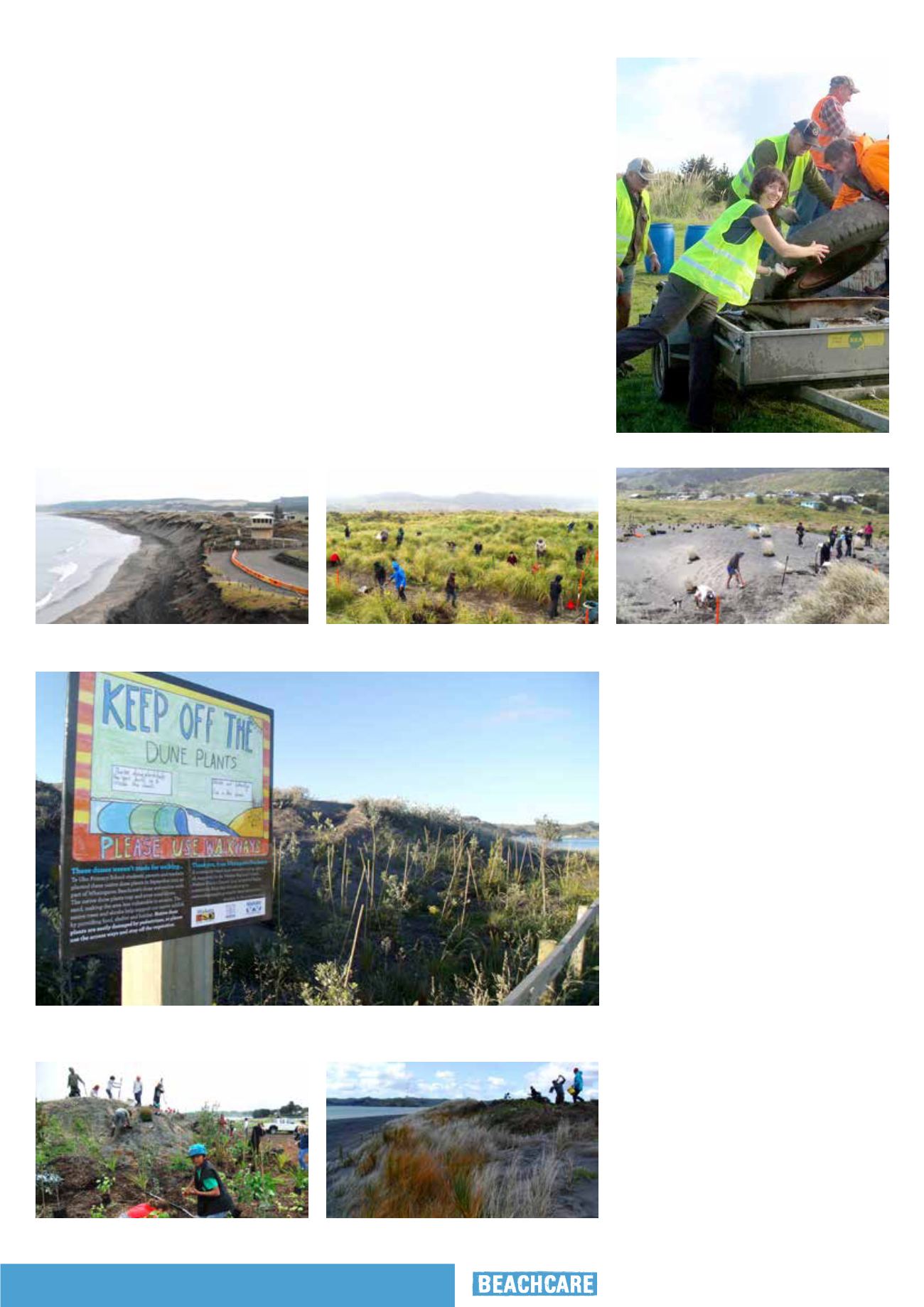
11
Magazine
Port Waikato
The Port Waikato shoreline has continued to erode in a trend that began in 2008 when a series of
storms eroded the dunes by 5-8 metres. Large erosive storms featured again during the 2012 and
2013 winters. On average, the dunes at Port Waikato have now eroded 10-15 metres landward from
where they were in 2008.
While these shoreline changes sound extreme, they are part of the cycles and fluctuations of the
west coast beach environment. Leading up to 2008, the Port Waikato dunes had gone through a
period of accretion, which created a wide dune buffer. For the majority of the Port Waikato coastline
this wide buffer of spinifex-covered dunes was able to absorb the storm erosion events and then
recover naturally before the next event. However, at Sunset Beach, the car park has reduced the
width of the dune buffer, preventing it from being able to self-repair between storms. Waikato
District Council is currently looking at options for this area.
In 2013, local residents who had been working with DOC staff to protect local bird-life, decided to
revive the Port Waikato Beachcare group with a focus on protecting and enhancing the biodiversity
values of the sand spit. A well-attended public meeting was held and followed by a series of working
bees, including a dune clean-up day and dune planting days. In total, 4550 native plants were
planted in their first year, including the endangered dune plants Euphorbia glauca and Pimelaea
arenaria – what a start!
Wha- ingaroa
The dunes at Raglan’s Te Kopua domain were
the focus of Whāingaroa Beachcare’s efforts in
2012, with local Te Uku school students getting
on board. This site is part of the three-year
nationwide back-dune project, and Te Uku
Primary School jumped at the chance to help
out the local community by holding a native tree
planting working bee.
Over 150 trees, 1000 back-dune plants and
500 fore-dune grasses were planted by the 60
students, teachers and parents. A mix of coastal
native tree and shrub species were planted
including karaka, karo, ngaio, akeake and
taupata, along with some large pōhutukawa.
The Te Uku students then designed informative
signage to help protect the plantings and
educate people about the importance of our
sand dunes and coastal forests. Four of these
were made into signs and installed near
the plantings. The Waikato District Council
supported the project by preparing and fencing
the planting area, and installing new beach
access ways.
This area was further enhanced in 2013 with
another working bee to fill in any gaps from the
2012 area and extend the fore-dune plantings by
another 50 metres.
The pīngao and spinifex planted in 2012 is
looking healthy.
Te Uku working bee.
Sunset beach carpark with the sand spit
in the background.
Back-dune tree planting working bee.
Dune blow-out working bee.
Dune clean up day.
Signage designed by Te Uku Primary School students.


